Walking back to Ancient Japan
Over a thousand years ago, Nara - or Heijokyo as it was known then - was the capital of Japan, and there were many walking routes leading to Nara. The Yamanobe-no-Michi which literally translates to "the path alongside the mountain", is one of these ancient walking routes. This age-old path and the spots it connects are even recorded in two of the oldest Japanese historical texts, the Kojiki and the Nihon Shoki, which date back to over 1300 years ago!
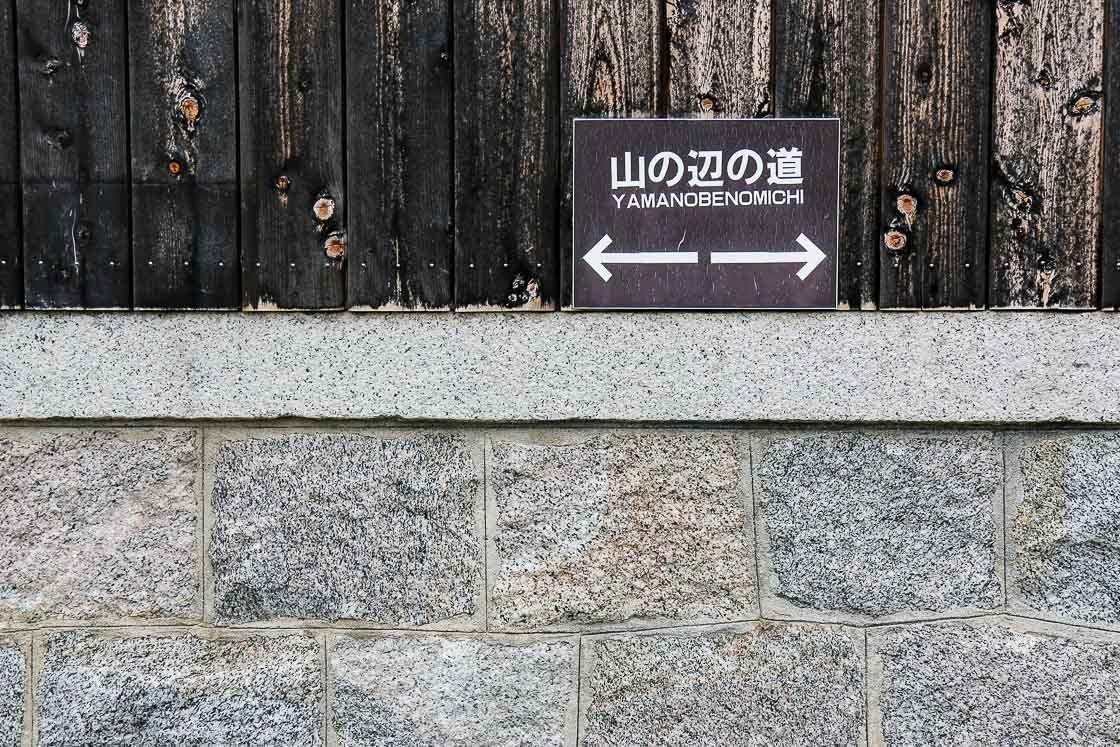
The Yamanobe-no-Michi is an approximately 35 kilometer long walking route that follows the mountainside. Visitors who walk the path will find themselves transported through a variety of scenes including forest, rice fields and villages. The route connects a number of shrines and temples: Kasuga Shrine, Isonokami Shrine and Omiwa Shrine to name a few that have their own illustrious histories.
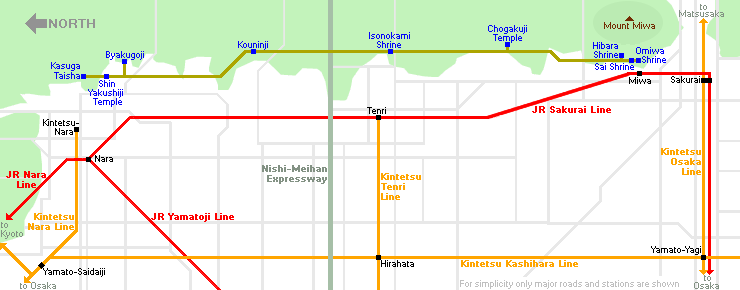
The best way to get a better understanding of the route is to walk and experience it first-hand, which was what I did. I completed the route over two days, and during that time visited about ten shrines and temples, saw a few burial mounds and passed some villages and a lot of farmland. Even though parts of the route passed through the forest, paved roads and cobblestone paths made up a fair amount of the trail. Good walking shoes are definitely recommended as well as a love for walking outdoors for long stretches of time. There are public toilets along the way, but as there are limited shops for meals, it is advisable to bring some food.
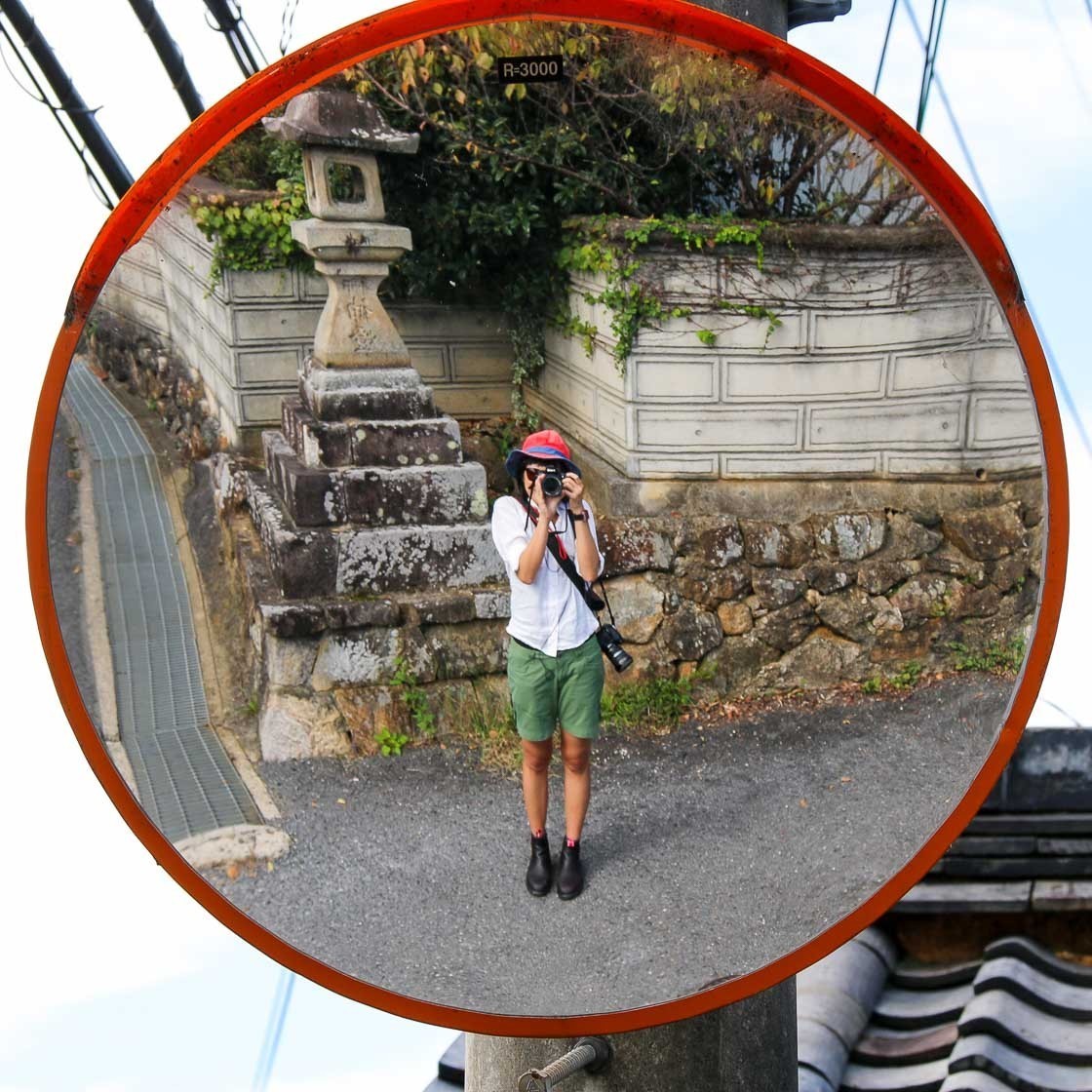

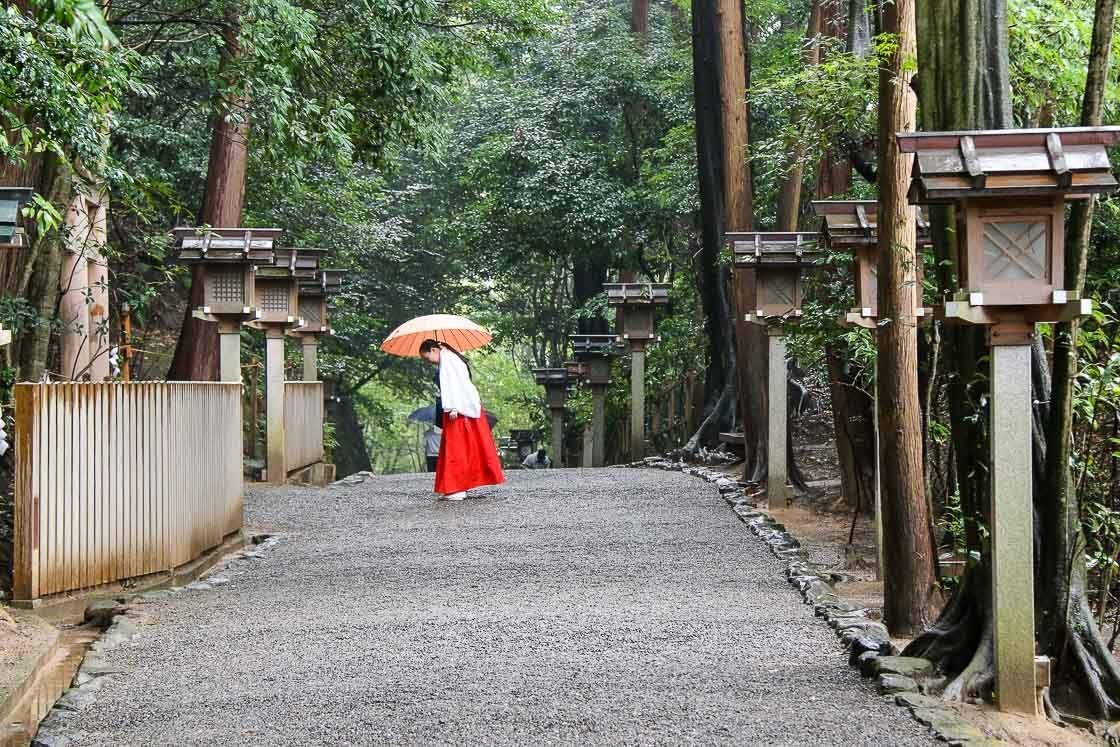
Day 1
Starting at Kasuga Shrine in Nara, a shrine which was established parallel to the founding of Heijokyo. This well-visited shrine is not far from the popular Nara Park and Todaiji, and has expansive grounds for visitors to wander about. I took a walk in the shrine and headed southwest out of the grounds towards Shin Yakushiji Temple which was a short walk away and virtually devoid of visitors compared to Kasuga Shrine. Inside the temple's main hall, visitors can see a large wooden Yakushi Nyorai statue surrounded by 12 heavenly warriors which are also the oldest and largest ones in Japan. It was definitely a welcome change to be away from the crowds and to be able to enjoy some peace.

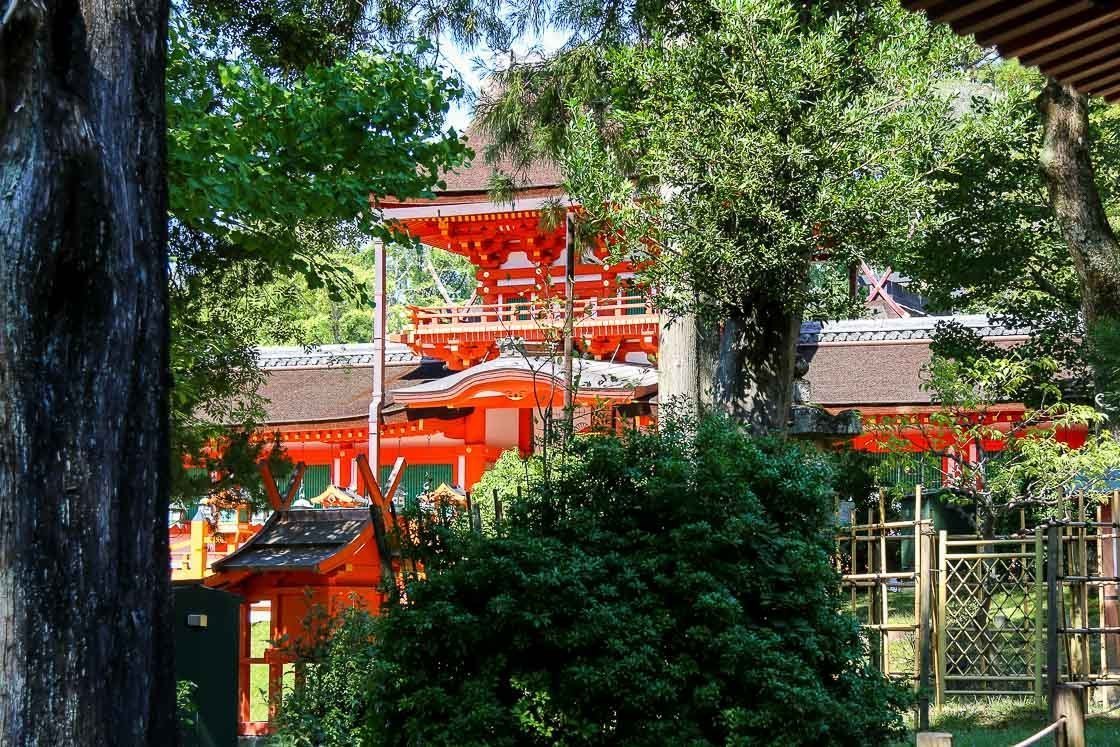
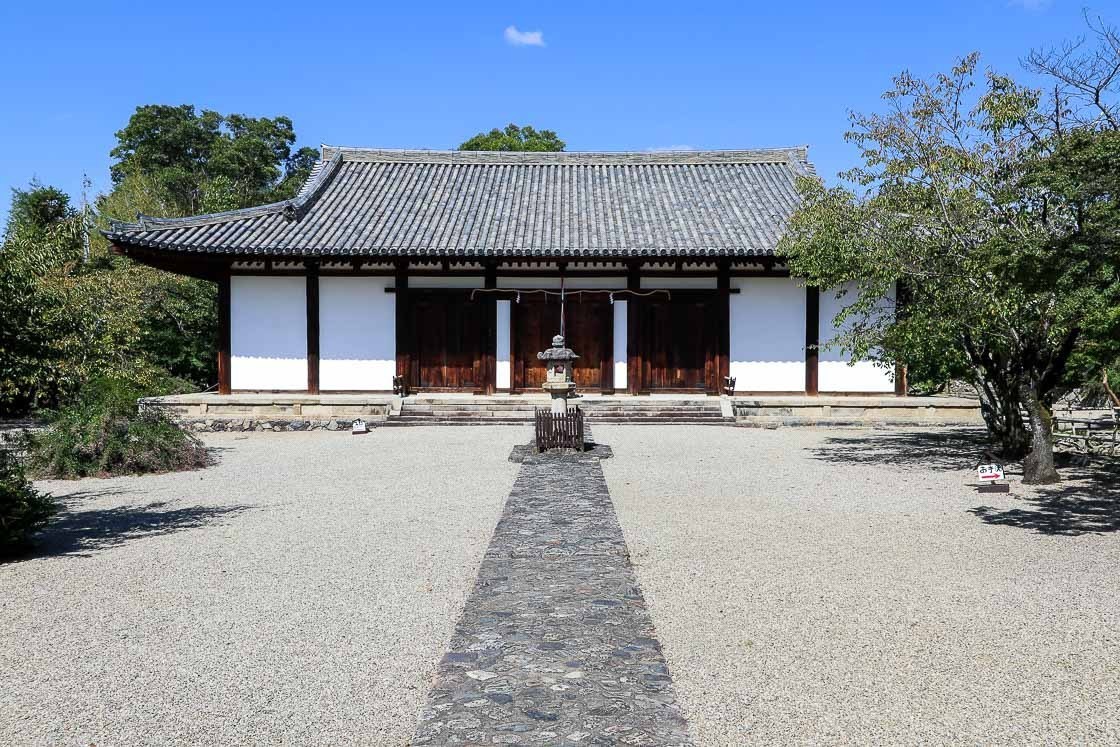
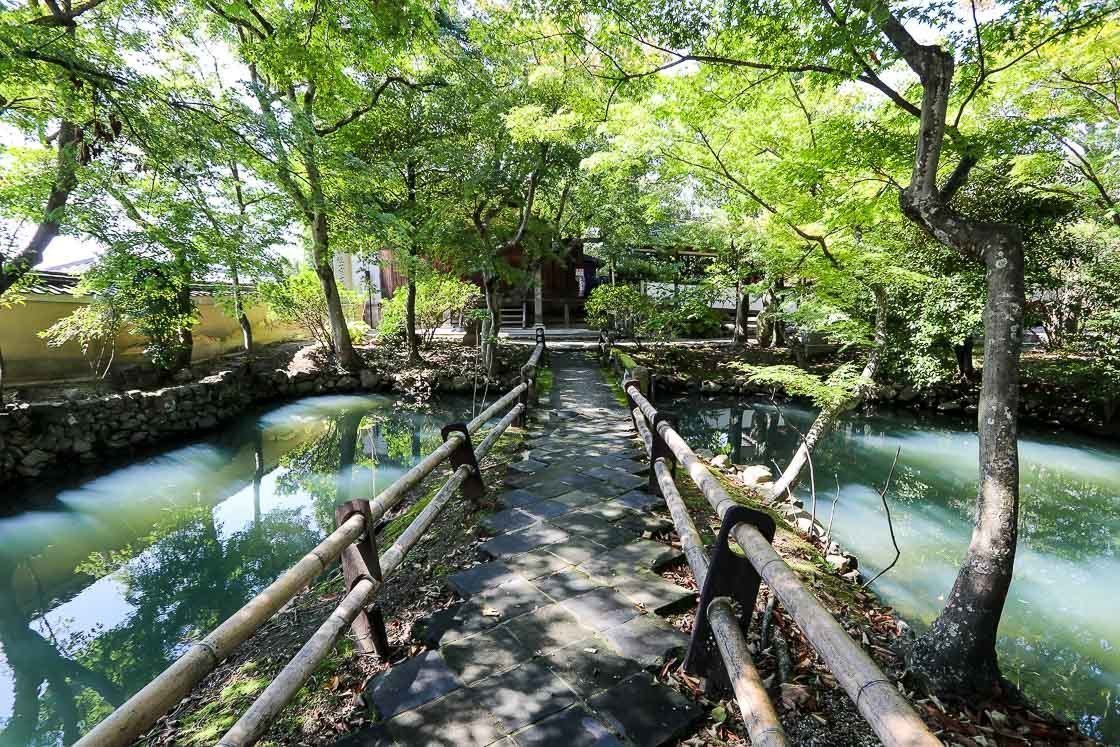
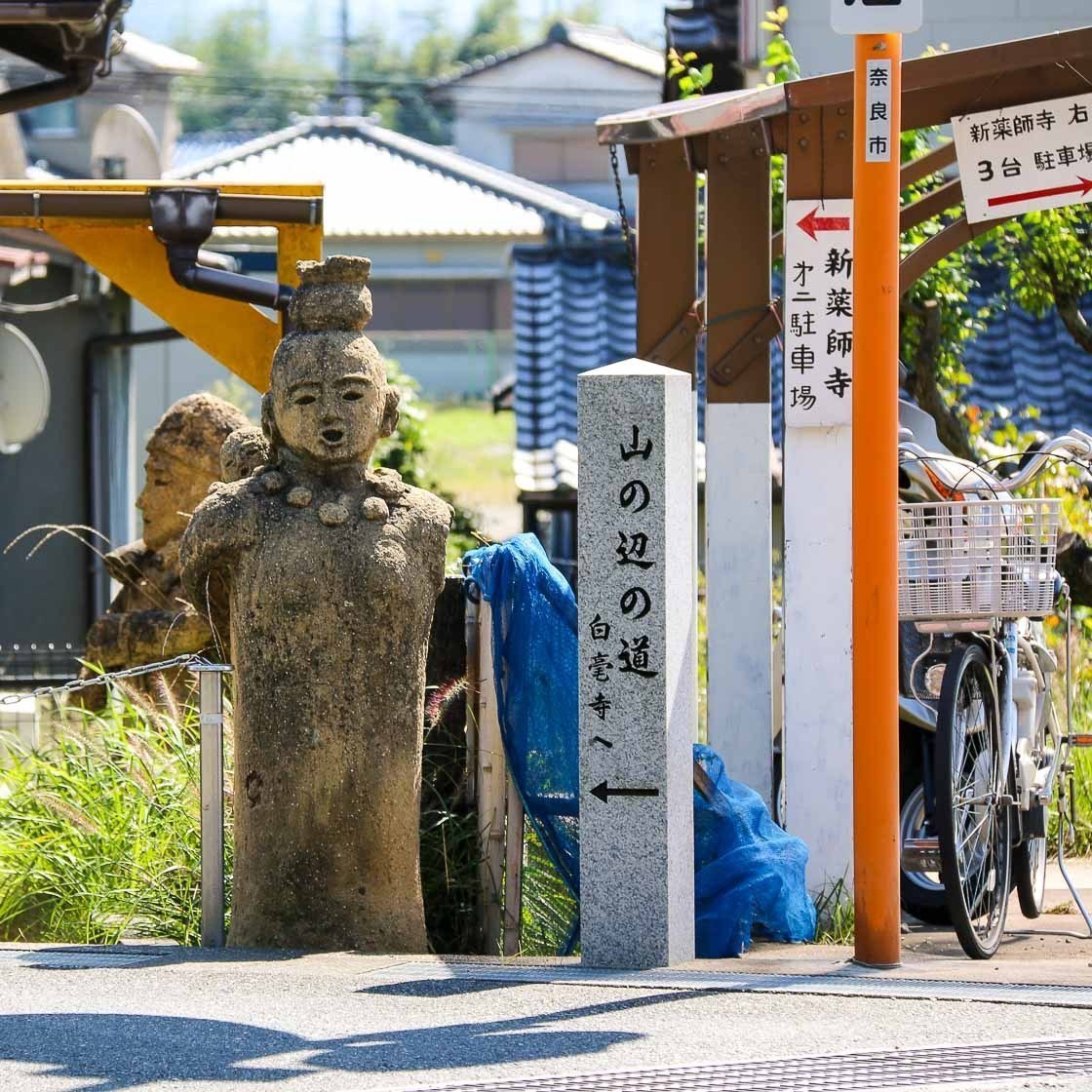
Keeping on the trail, I continued along some rice fields for about ten minutes and headed up to Byakugoji. Established in 715, this beautiful temple is built on a hill and affords panoramic views of Nara City, including the five story pagoda at Kofukuji and the top of Todaiji in the distance. My next leg took about 1.5 hours as I made my way to Kouninji Temple which was built in the early Heian Period at the beginning of the 9th century and stands serenely in the middle of the woods.
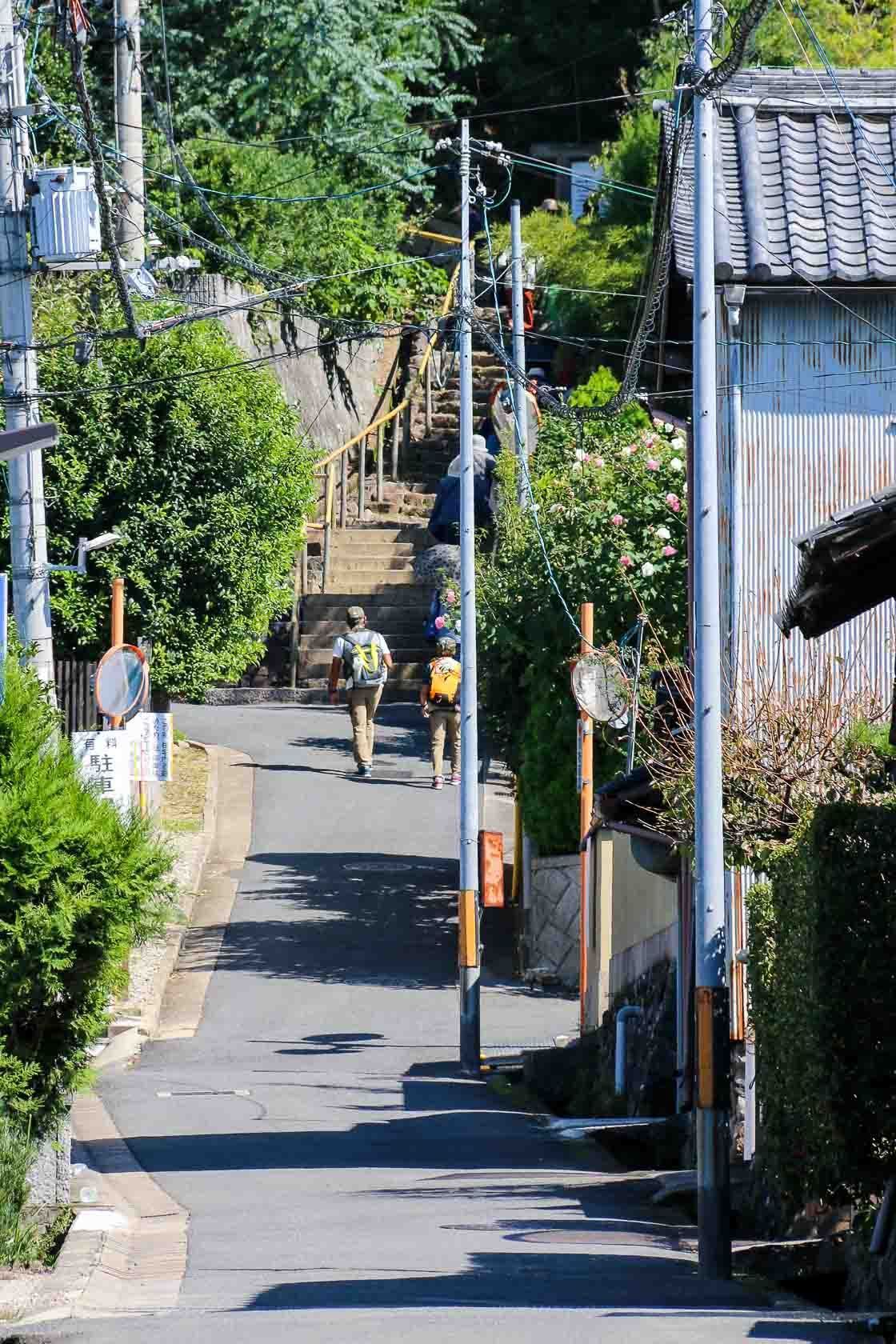



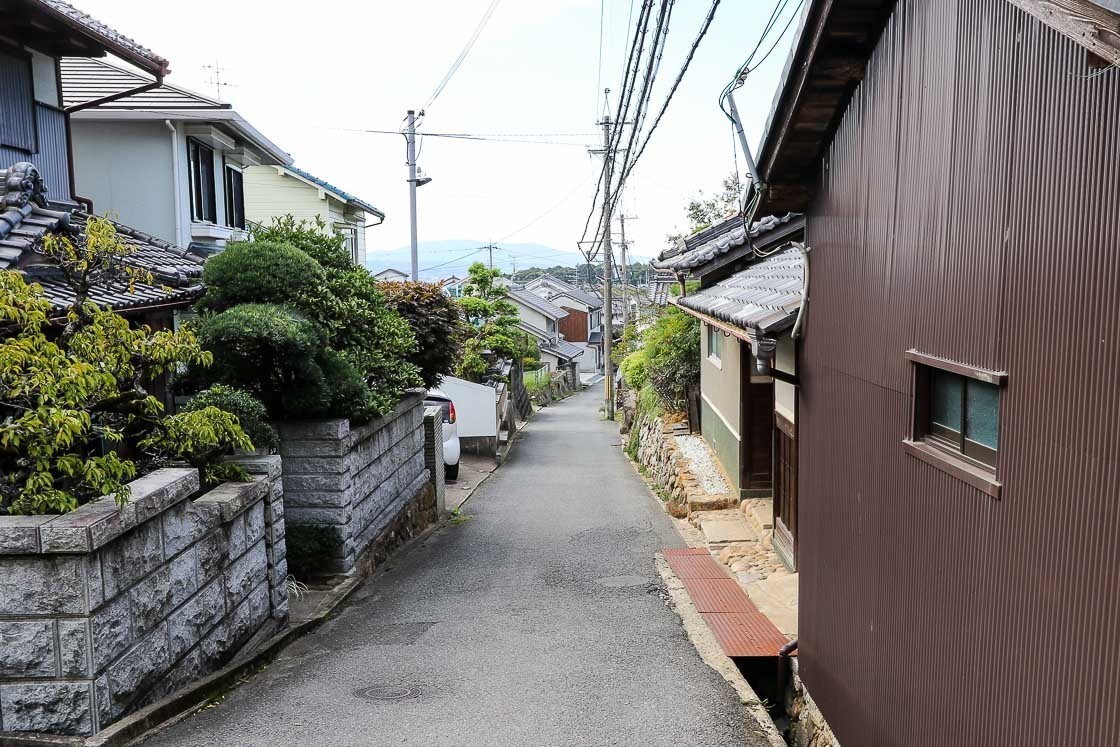
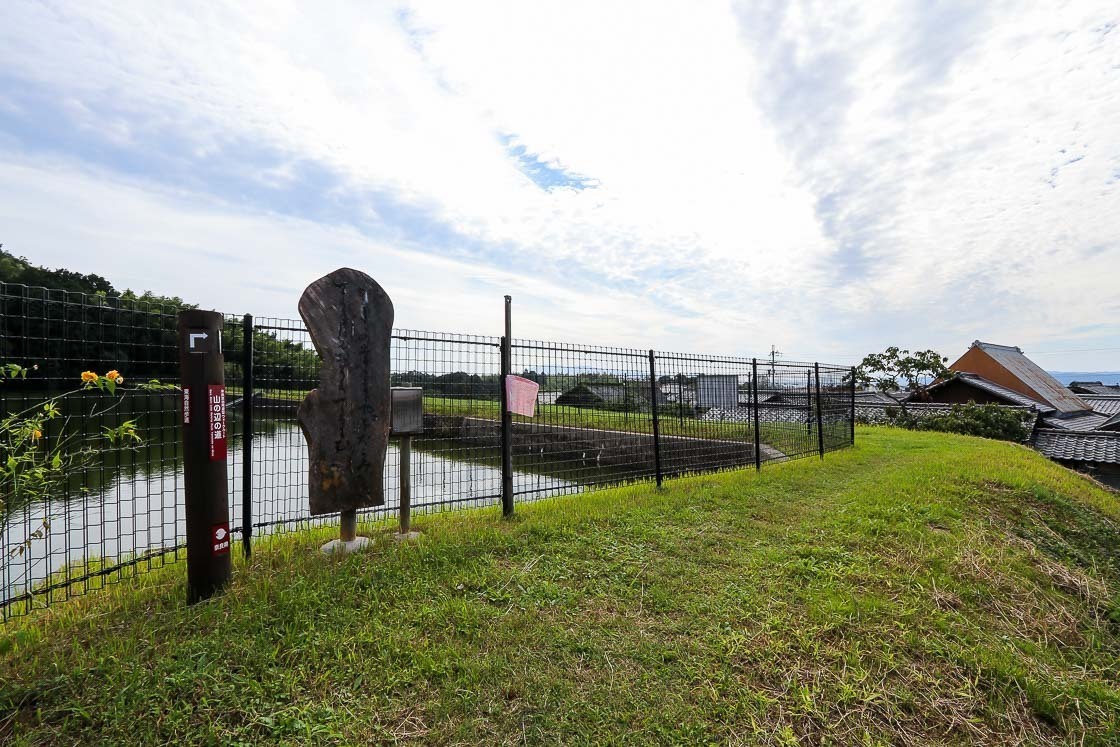
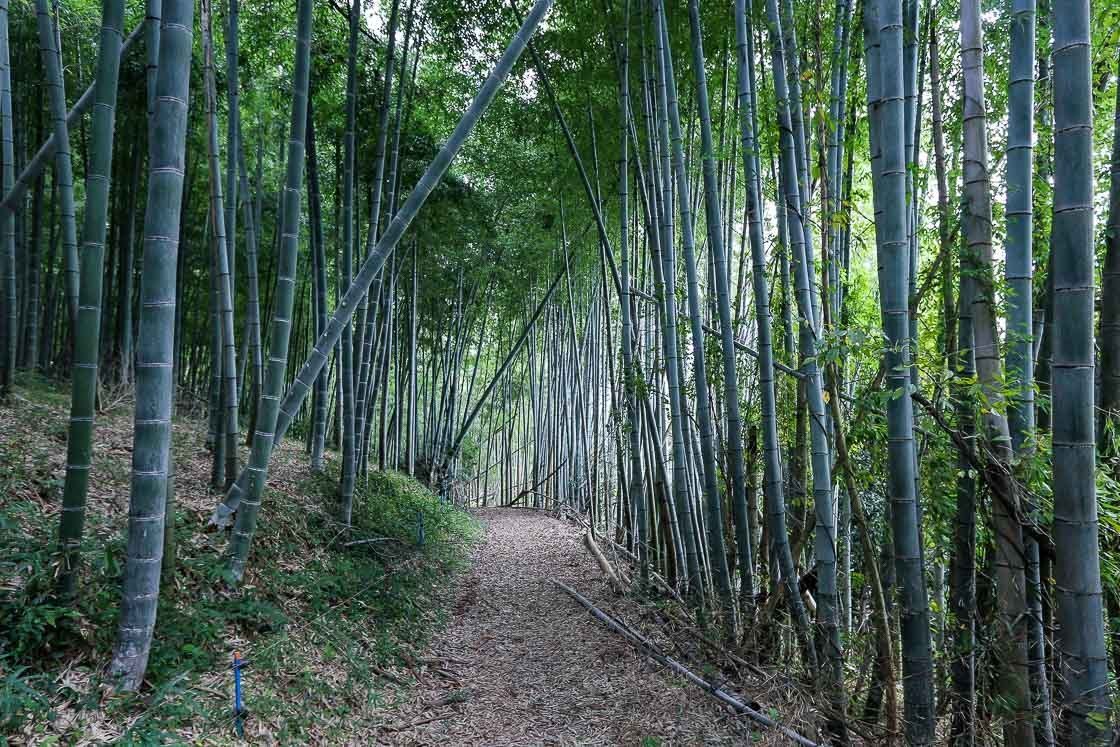

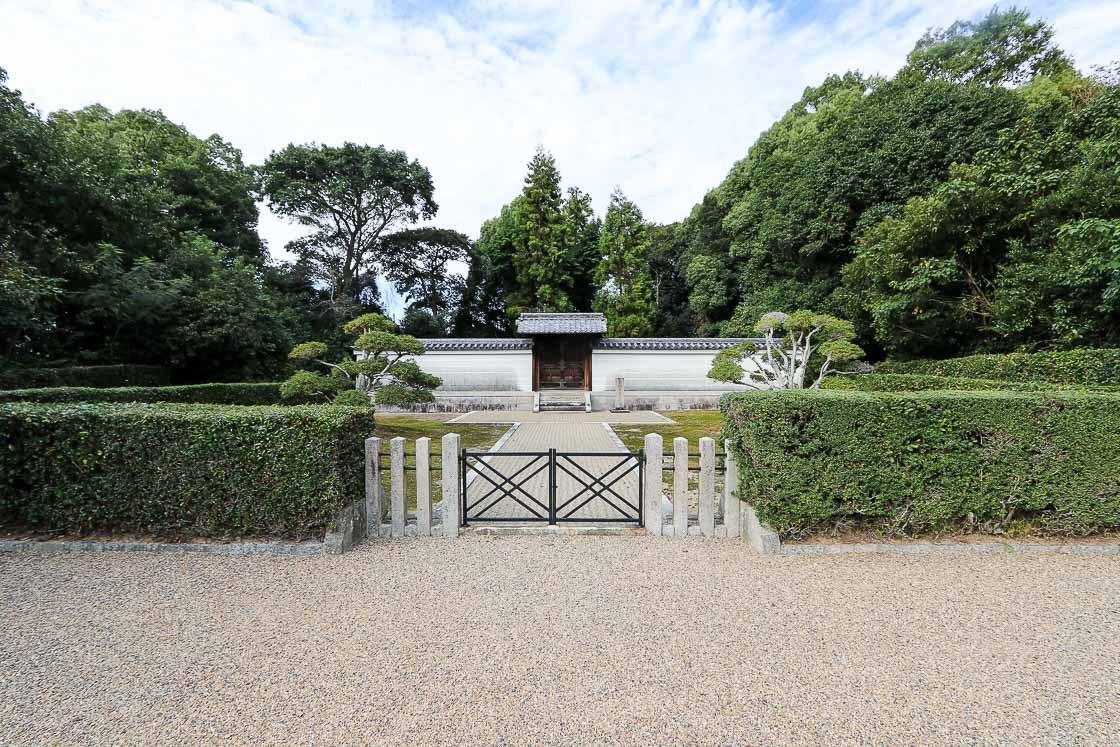
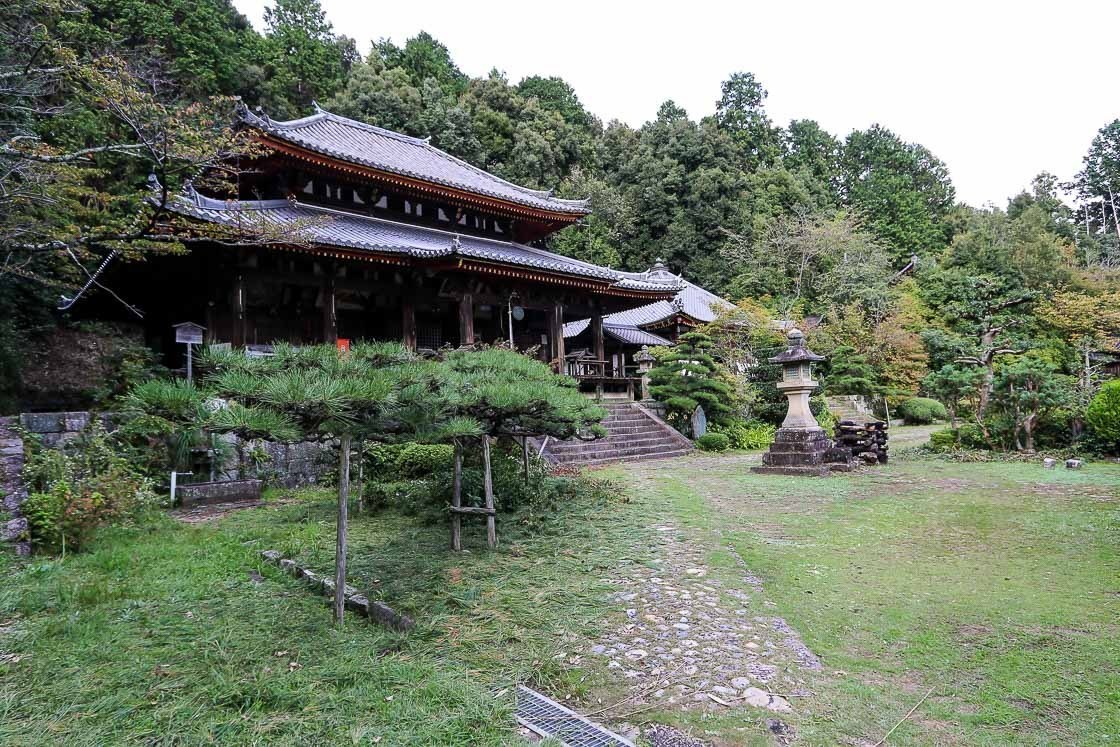
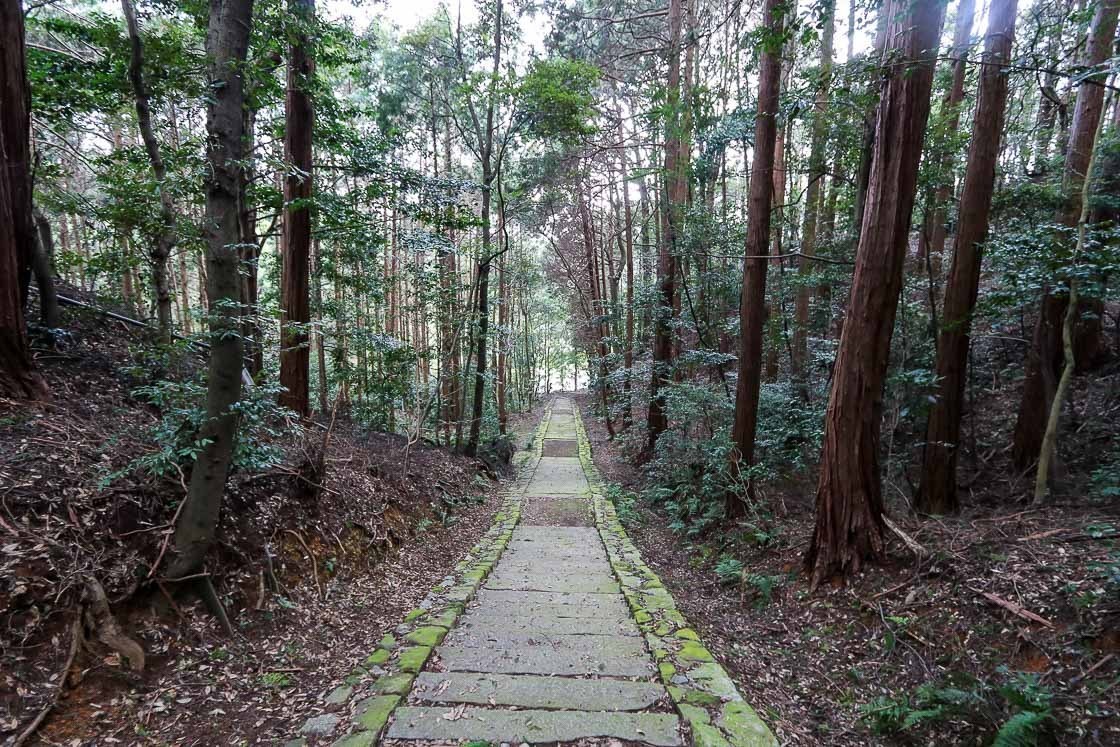
After visiting a number of religious sites and not passing another person along the way after Byakugoji, seeing people fishing at the Shirakawa Dam felt a little out of place. I persevered and soon found myself back in the woods and away from people and roads. Before I knew it, I was approaching the end of the walk for my first day. My final stop was Isonokami Shrine, one of the oldest shrines in the country. Its main hall is surrounded by cedar trees and moss-covered stone structures, and the coolness of the evening air added a sense of refinement. I saw shrine workers going about their job, and chickens (that are kept on the grounds) roaming about freely.


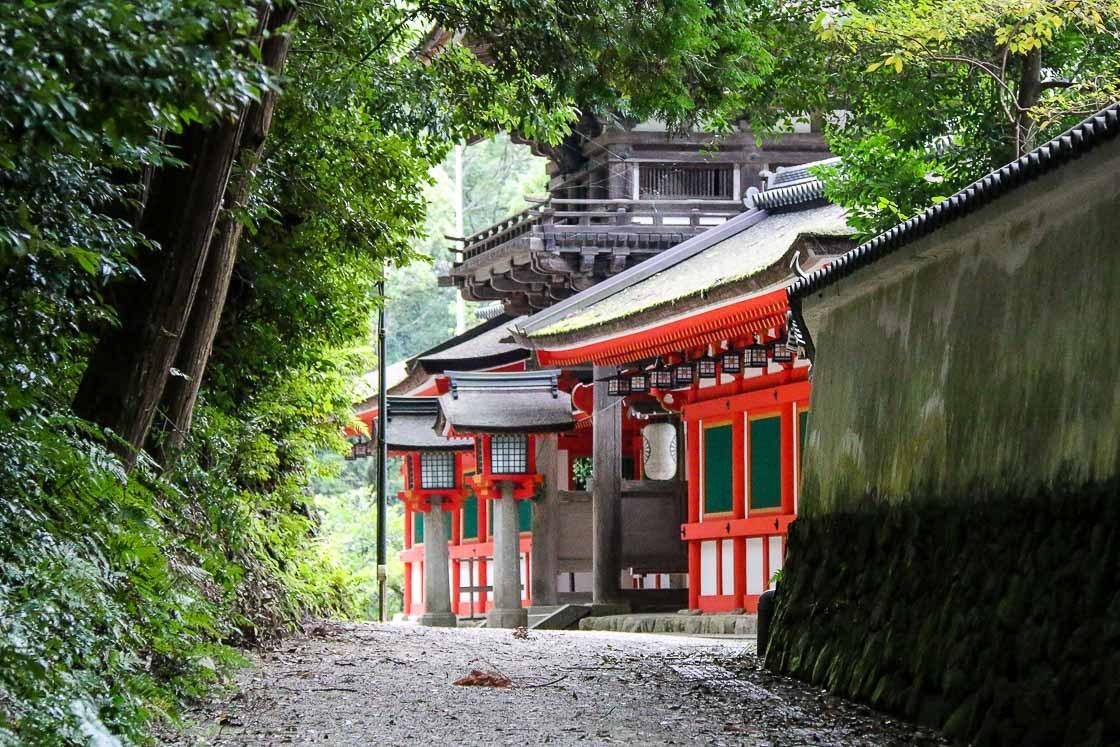
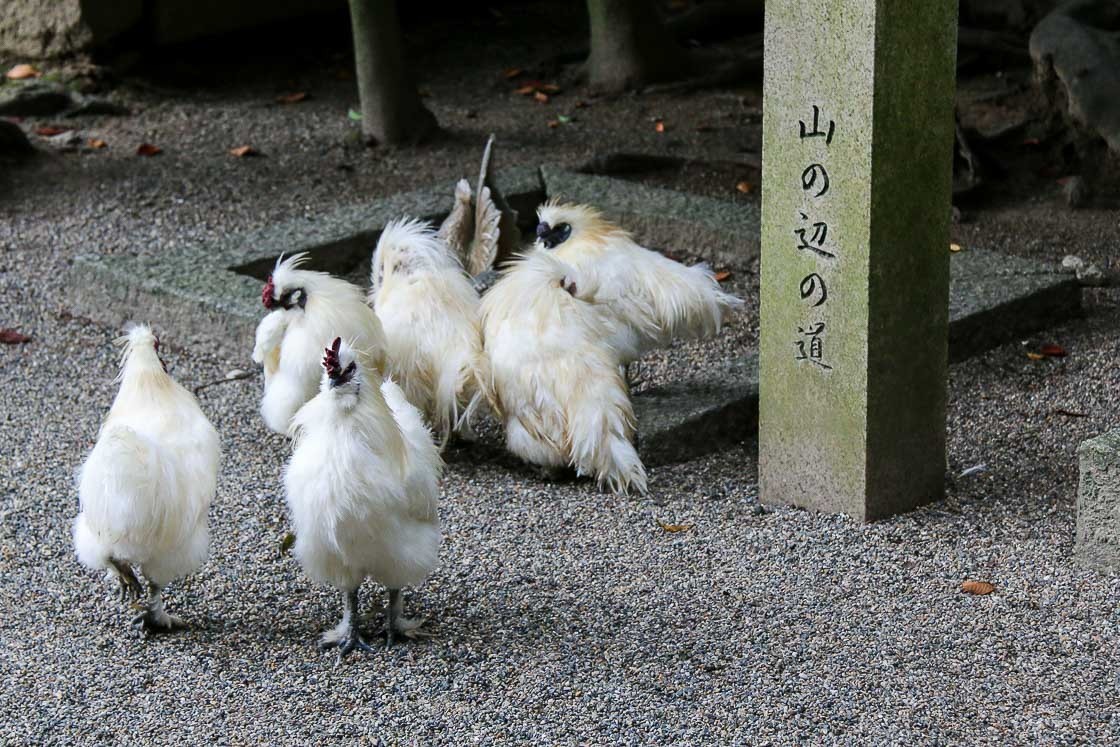
Day 2
Rising bright and early the next day, I picked up from Isonokami Shrine. I walked through the two small villages of Takenouchi and Kayo which afforded narrow winding streets, traditional houses and pastoral views. It was also around here where I saw unmanned roadside (or should I say garage) stalls selling seasonal fruit and vegetables. It felt quite quaint and reminded me that this was probably how villagers traded their surplus harvest.
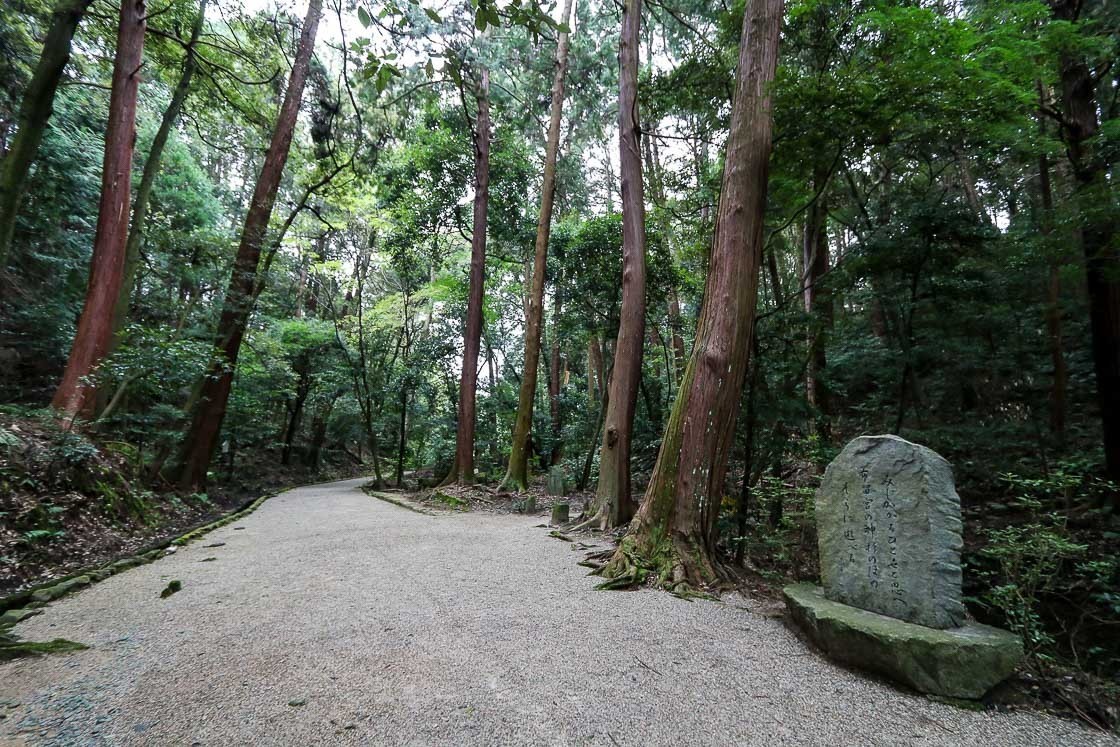
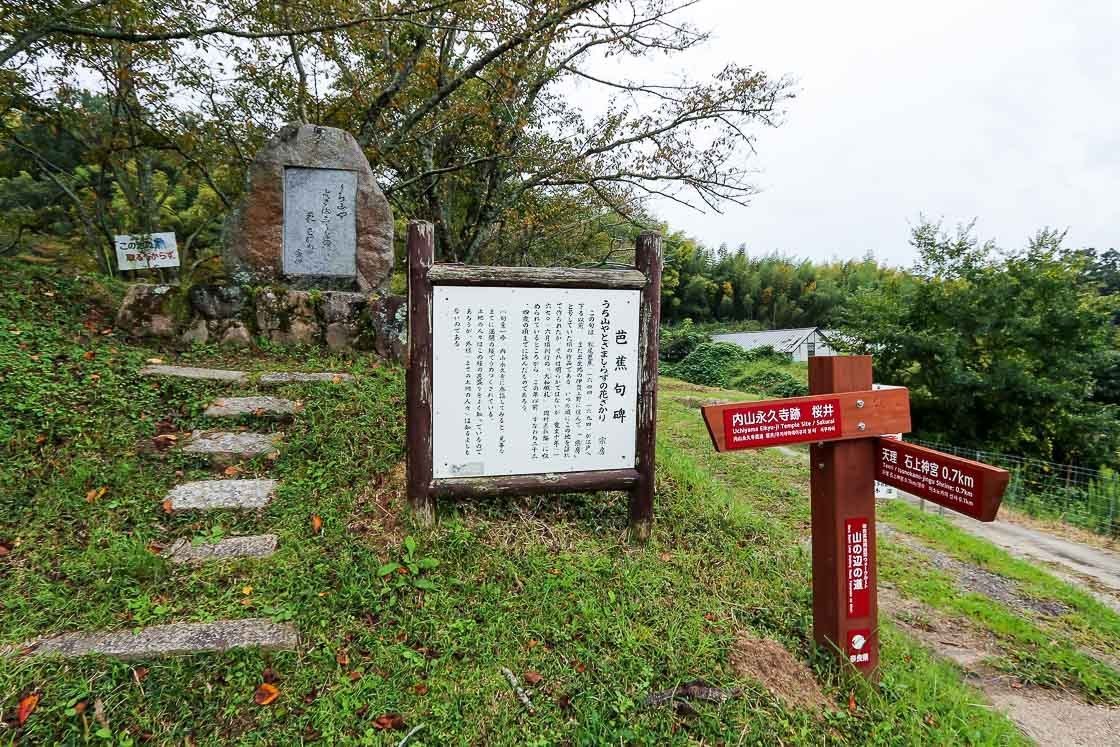
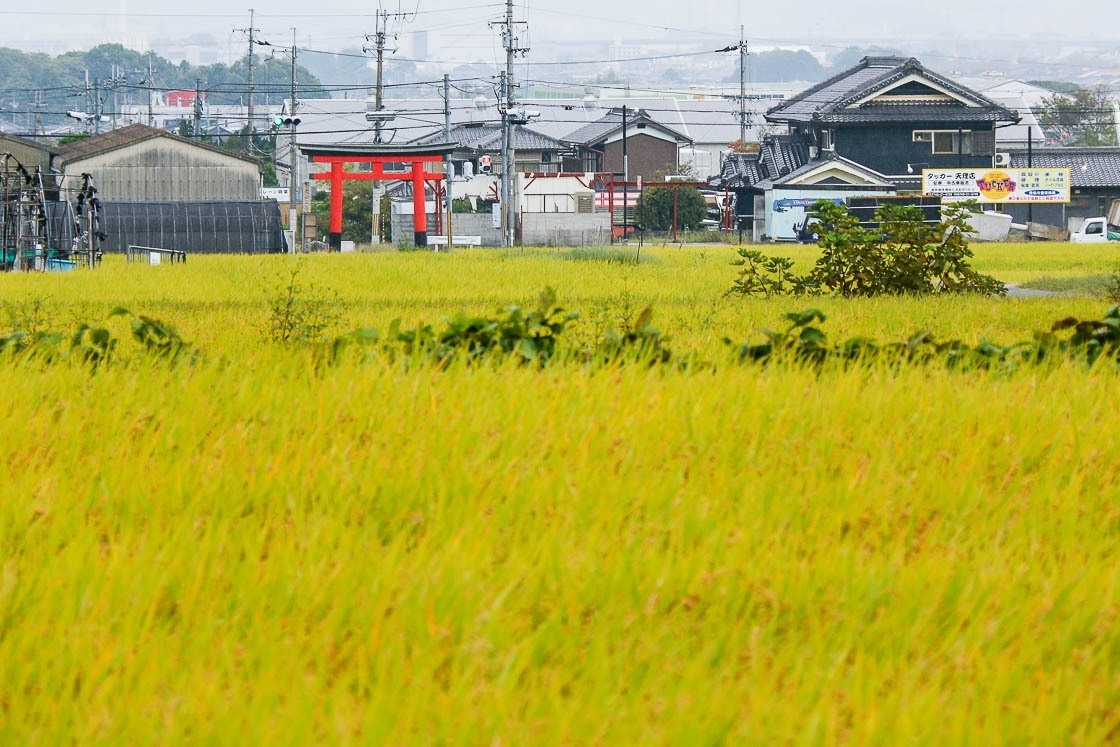
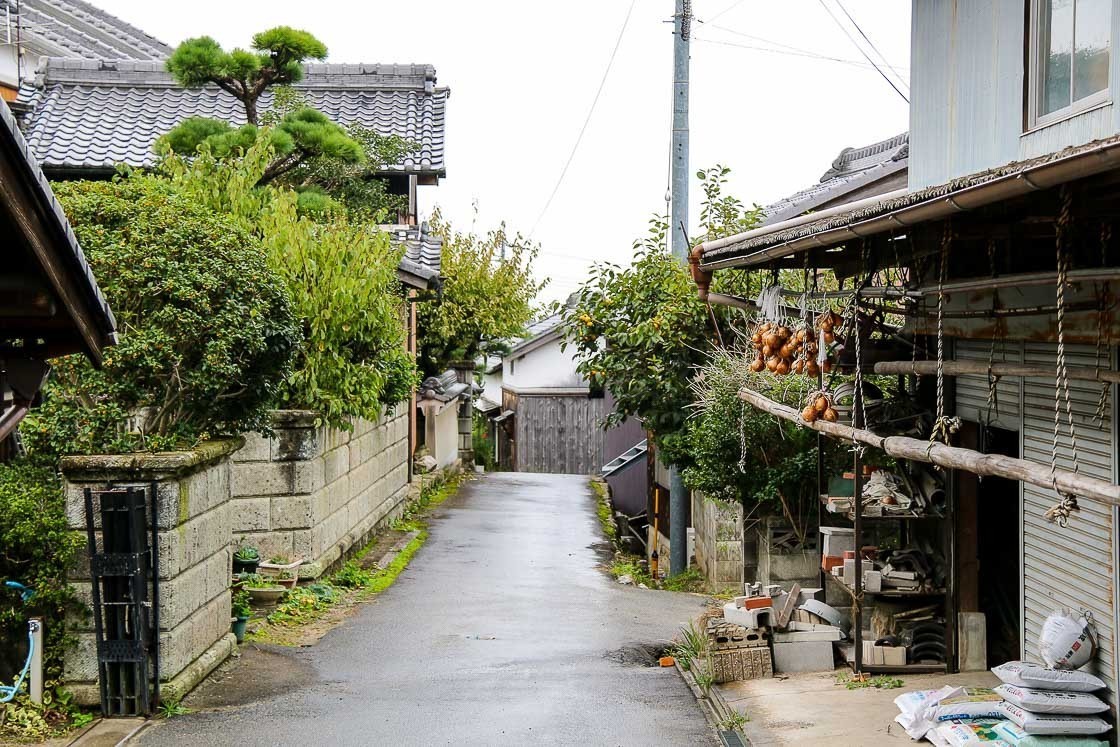

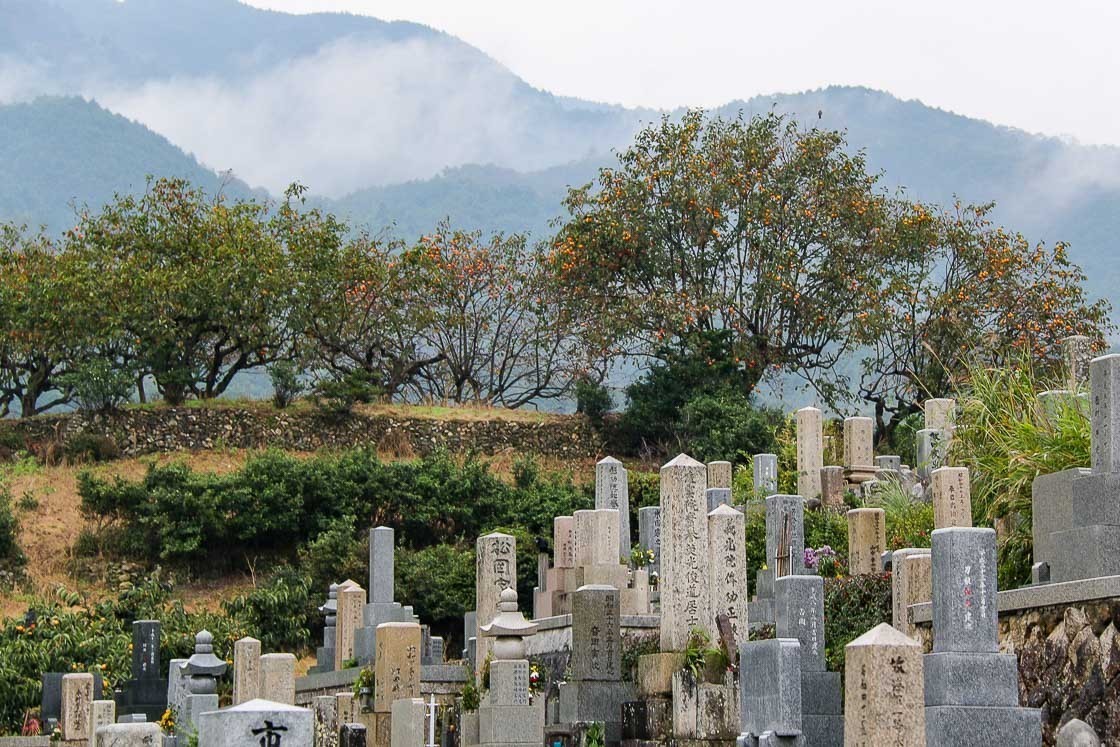
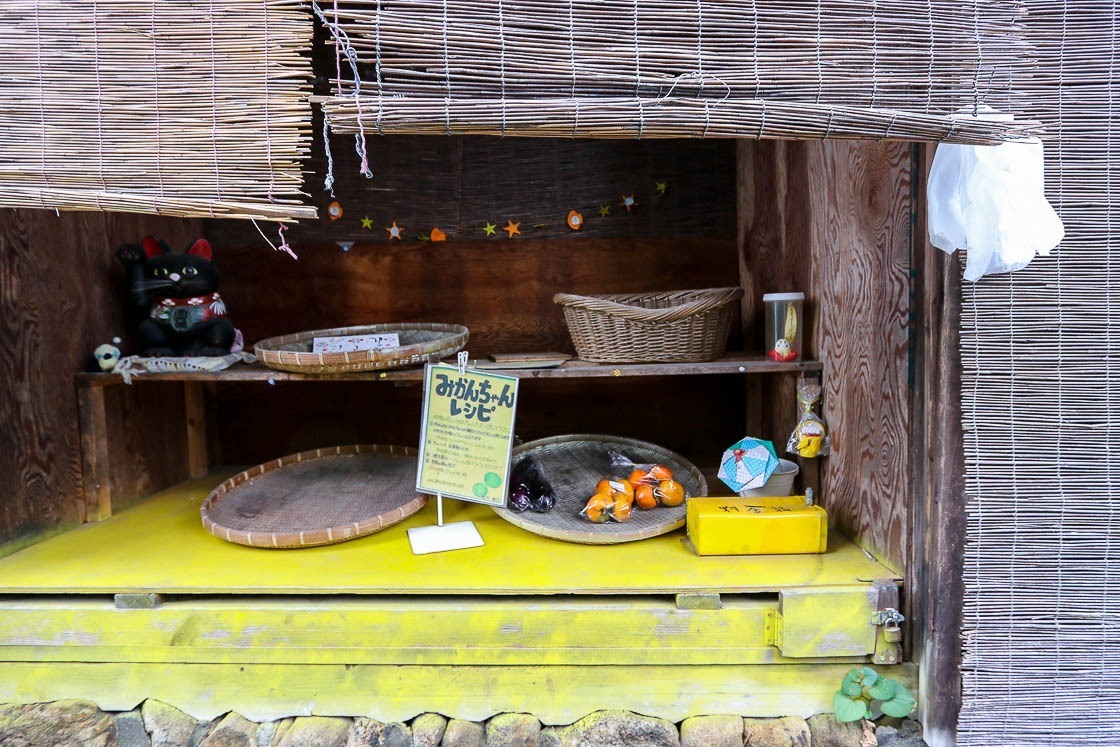
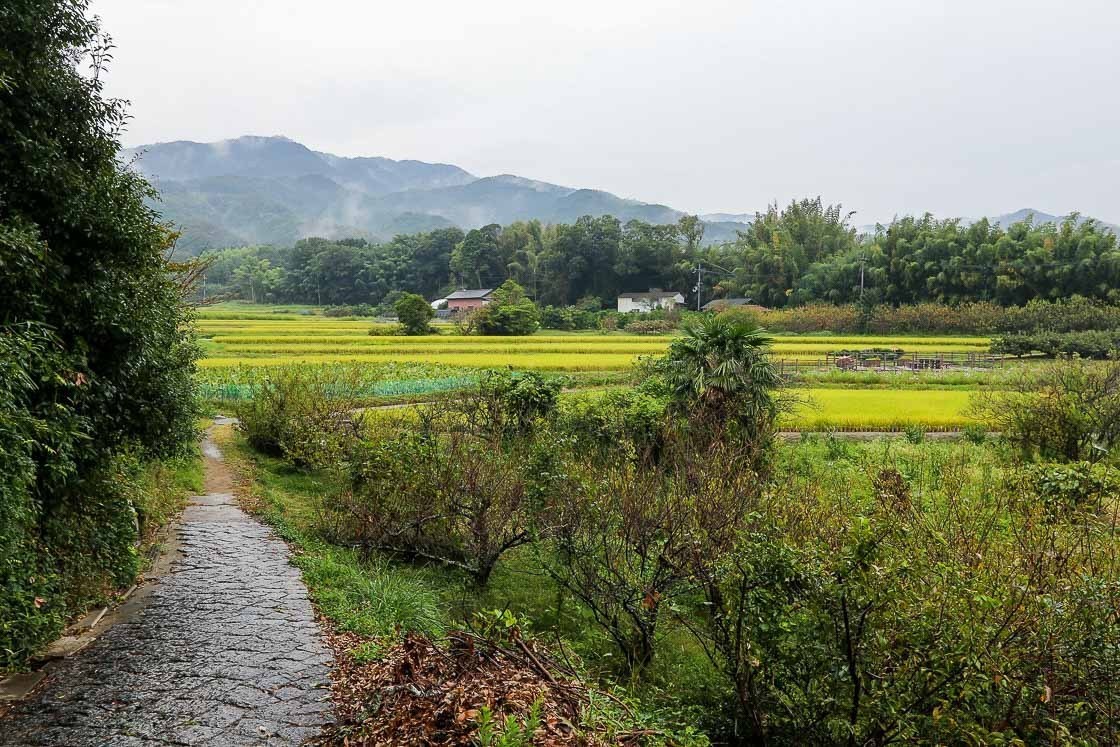
Chogakuji Temple was my next stop along the Yamanobe-no-Michi route. This temple was founded in 824 by Kukai (also known as Kobo Daishi) and is known for its seasonal flowers and cultural treasures. One of the interesting artworks displayed in the main hall (the actual work is displayed for a month a year while a print of it can be seen during the rest of the time) is a large paneled drawing of the path to heaven. It shows the progression from the evaluation of a person's life, the judgement and various punishments one has to suffer based on their living decisions, and the trials to be fought before reaching paradise.
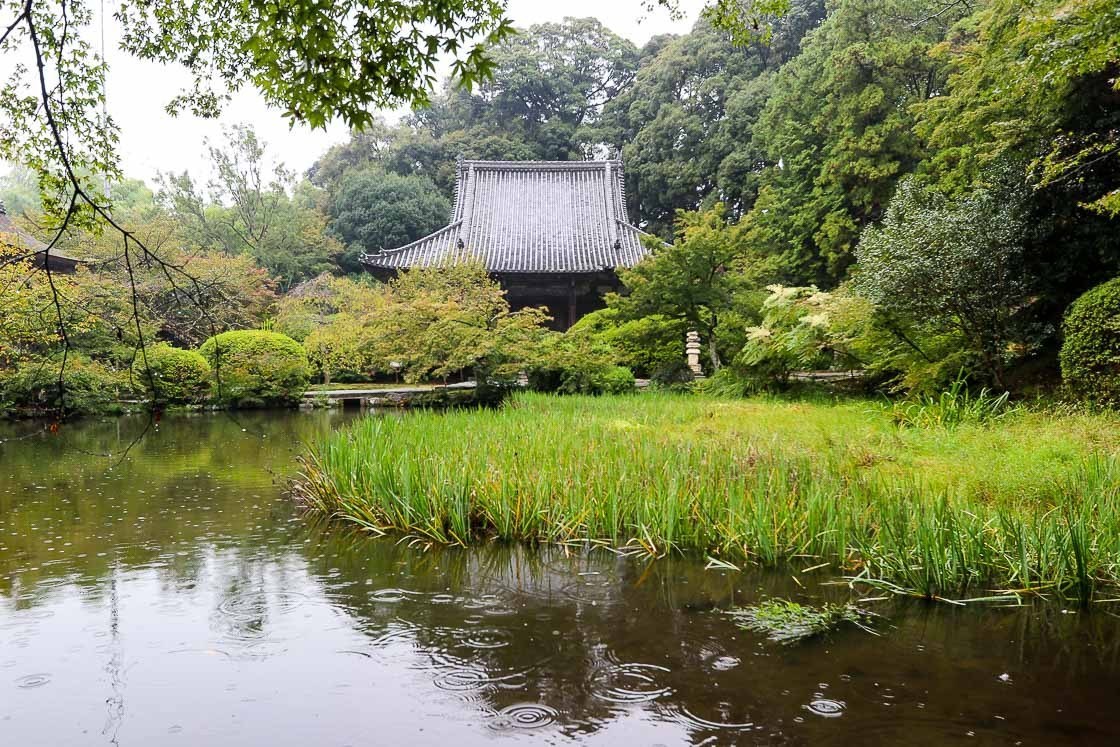
I also passed a couple of burial mounds of emperors of the past but truth be told, they looked liked small wooded islands surrounded by a body of water, and I would not have realised they were burial mounds if not for the information boards. The mounds' unique keyhole shapes are best viewed from above, but just knowing what I was looking at made it a little more meaningful.
Like my walk the day before, I passed lots of farmland. In addition to that, the mountains came into view on my left towards the later half of the walk. This made it feel like I was walking along the namesake of the route: Yamanobe-no-Michi, the path alongside the mountains.

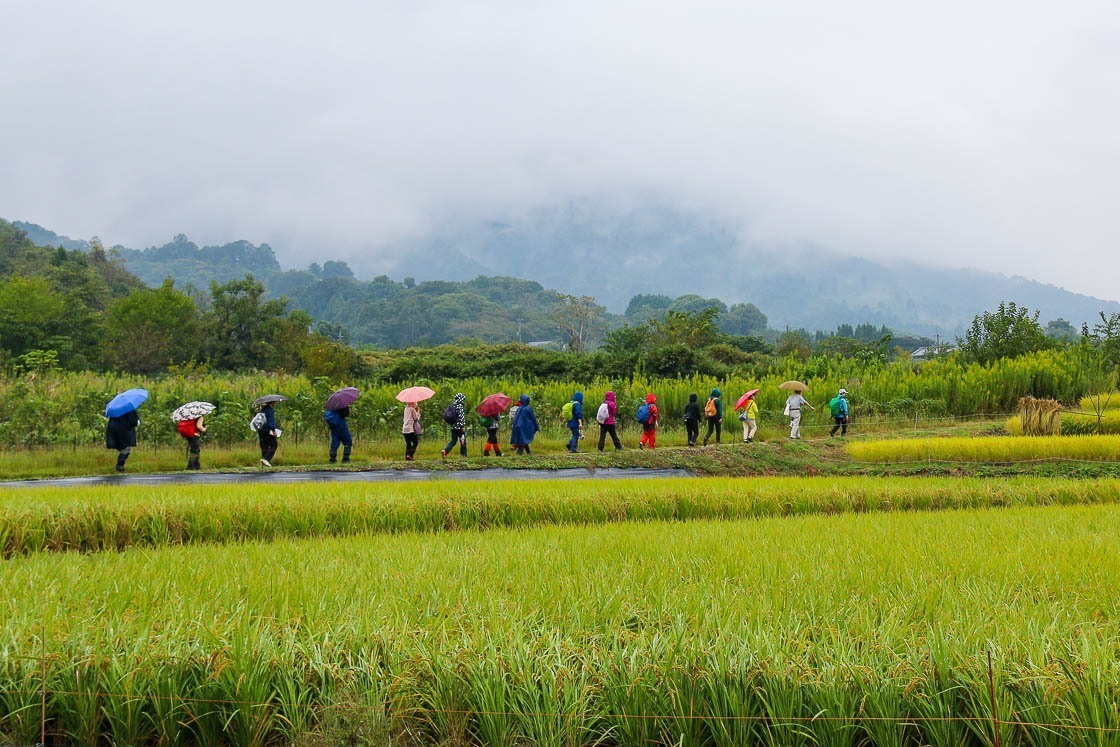
The goal of the second day's walk was Omiwa Shrine, one of the oldest Shinto shrines in Japan. Deeply connected to mountain worship, the shrine is located at the base of Mount Miwa which is considered to be a holy mountain.
About four hours after I started my walk on the second day, I reached Hibara Shrine, an auxiliary of Omiwa Shrine. A rare triple torii gate stands in place of the typical worship hall on the shrine grounds. From there, a 30-minute walk leads to Sai Shrine, another auxiliary shrine. Here stands the entry to ascend Mount Miwa. Prior applications have to be made and a 300 yen fee paid at Sai Shrine in order to climb the mountain. It takes about an hour to reach the summit, and note that are specific rules to be followed as it is a holy mountain and a religious site.
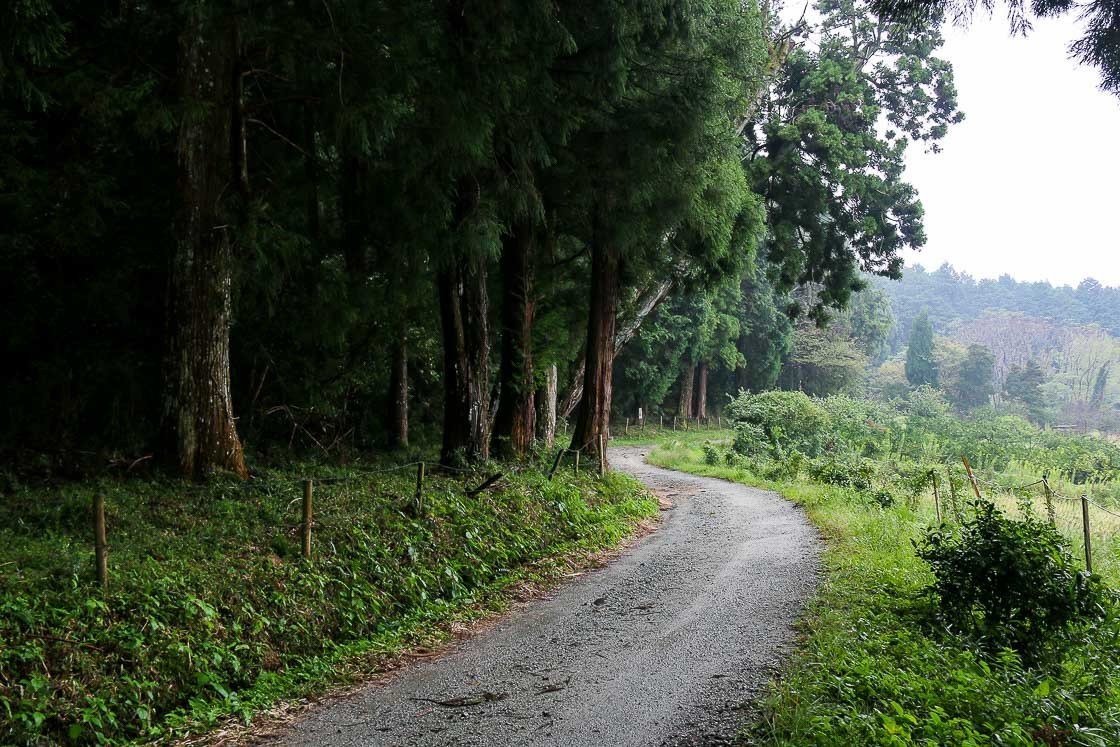
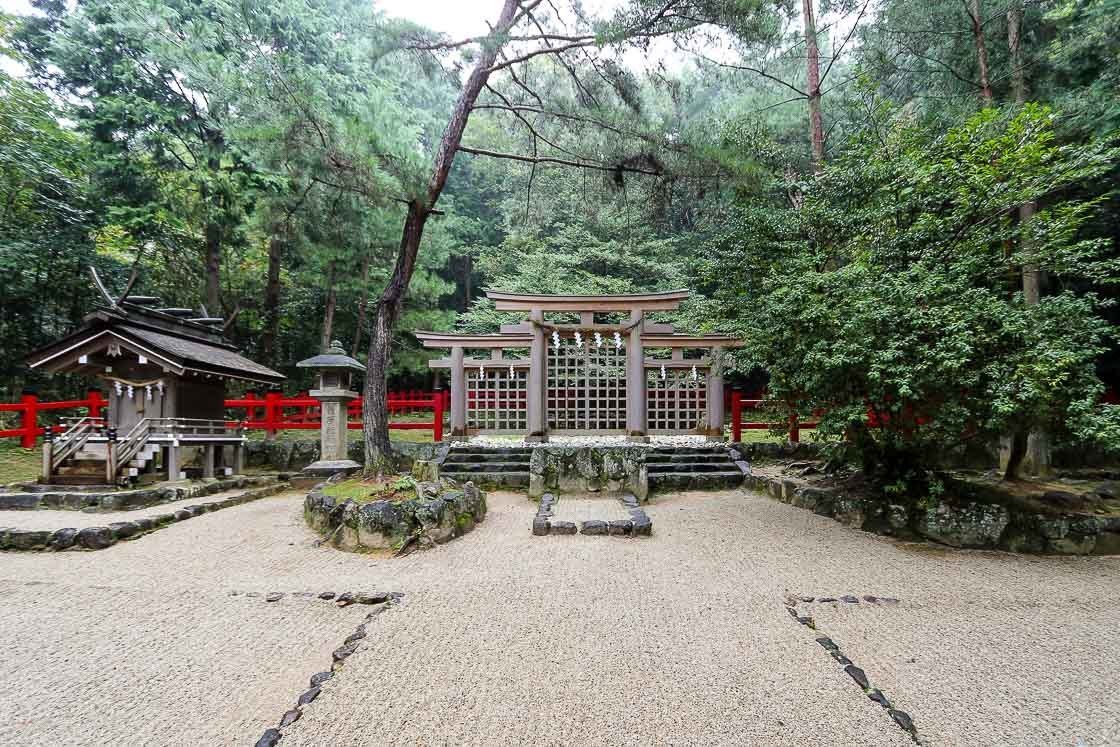
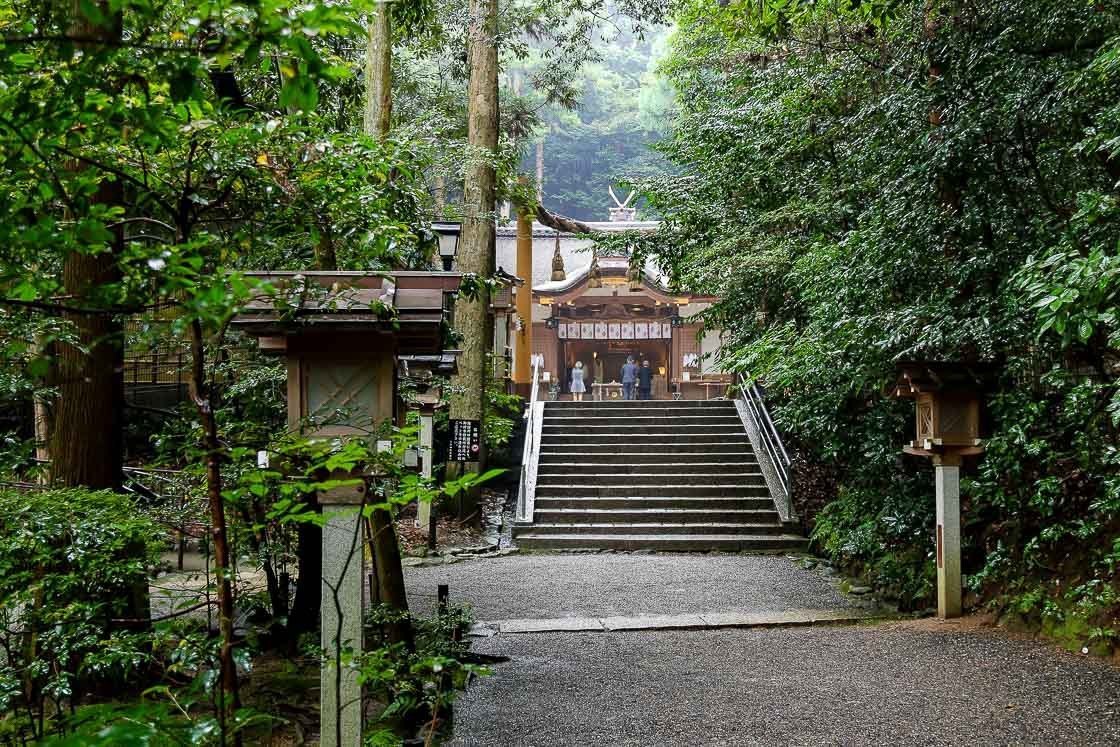
Finally just five minutes away was my goal, Omiwa Shrine. Passing the numerous auxiliary shrines was quite a lead up to the main one which was just as grand as I had imagined it to be. There were a lot more people than I had expected after spending all day not seeing many others. The Yamanobe-no-Michi continues on towards Sakurai Station, passing a few more monuments, but I called it a day at Omiwa Shrine.
The ancient route covered a lot of ground, and what I liked about it was visiting the numerous old shrines that most regular tourists would not visit. Of course, the scenery would be different depending on the time of year you visit, and I was fortunate to do the walk in early autumn and see the rice fields. However with spring come the cherry blossoms which can be seen along some parts of the trail, and late autumn would see the leaves changing colors.

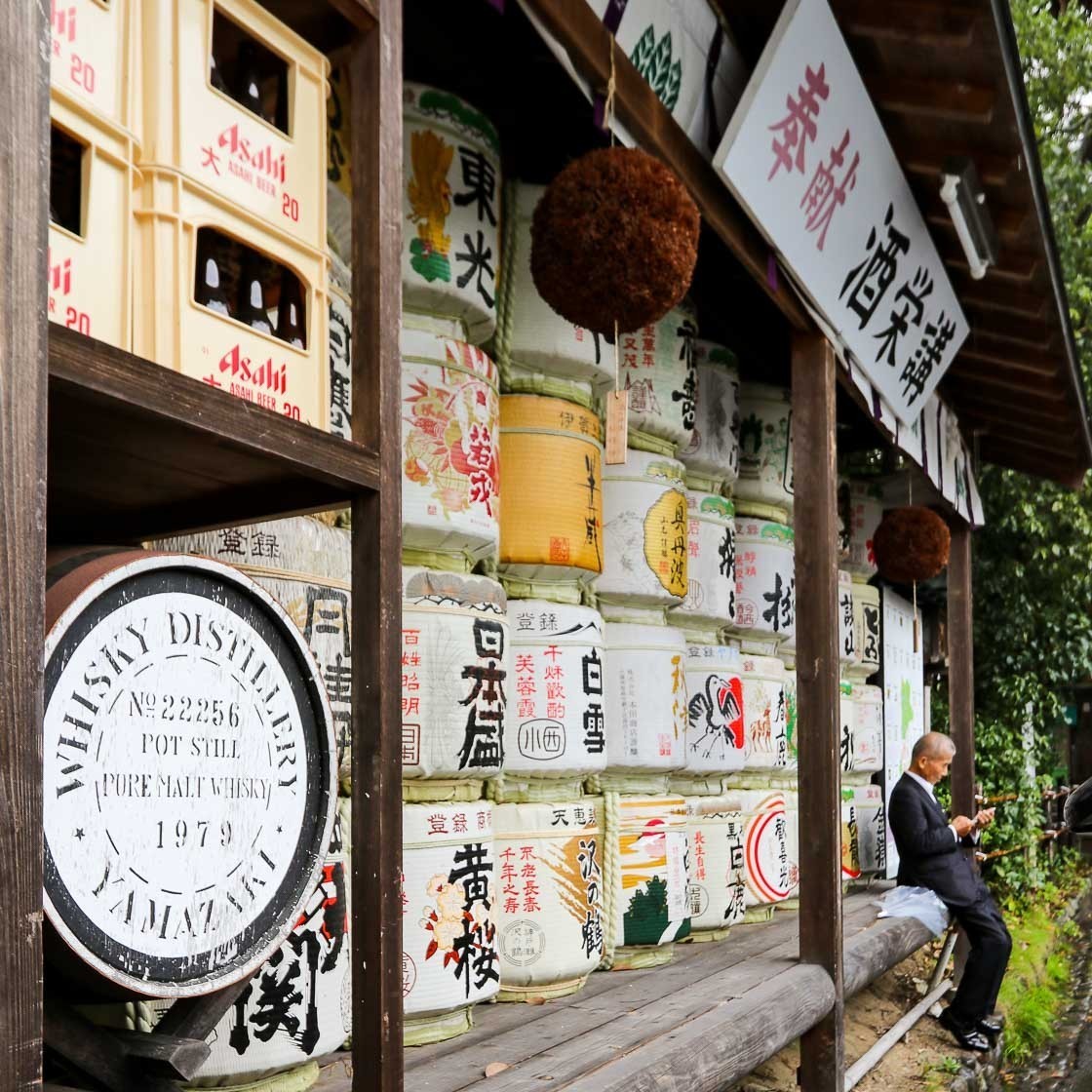
Access
The Yamanobe-no-Michi trail starts from Kasuga Shrine in central Nara and ends at Sakurai. Take a bus from either JR or Kintetsu Nara Station and get off at the Kasuga Taisha Honden bus stop (210 yen, frequent departures). From Sakurai Station, both JR and Kintetsu provide access back to Nara, Kyoto or Osaka.

